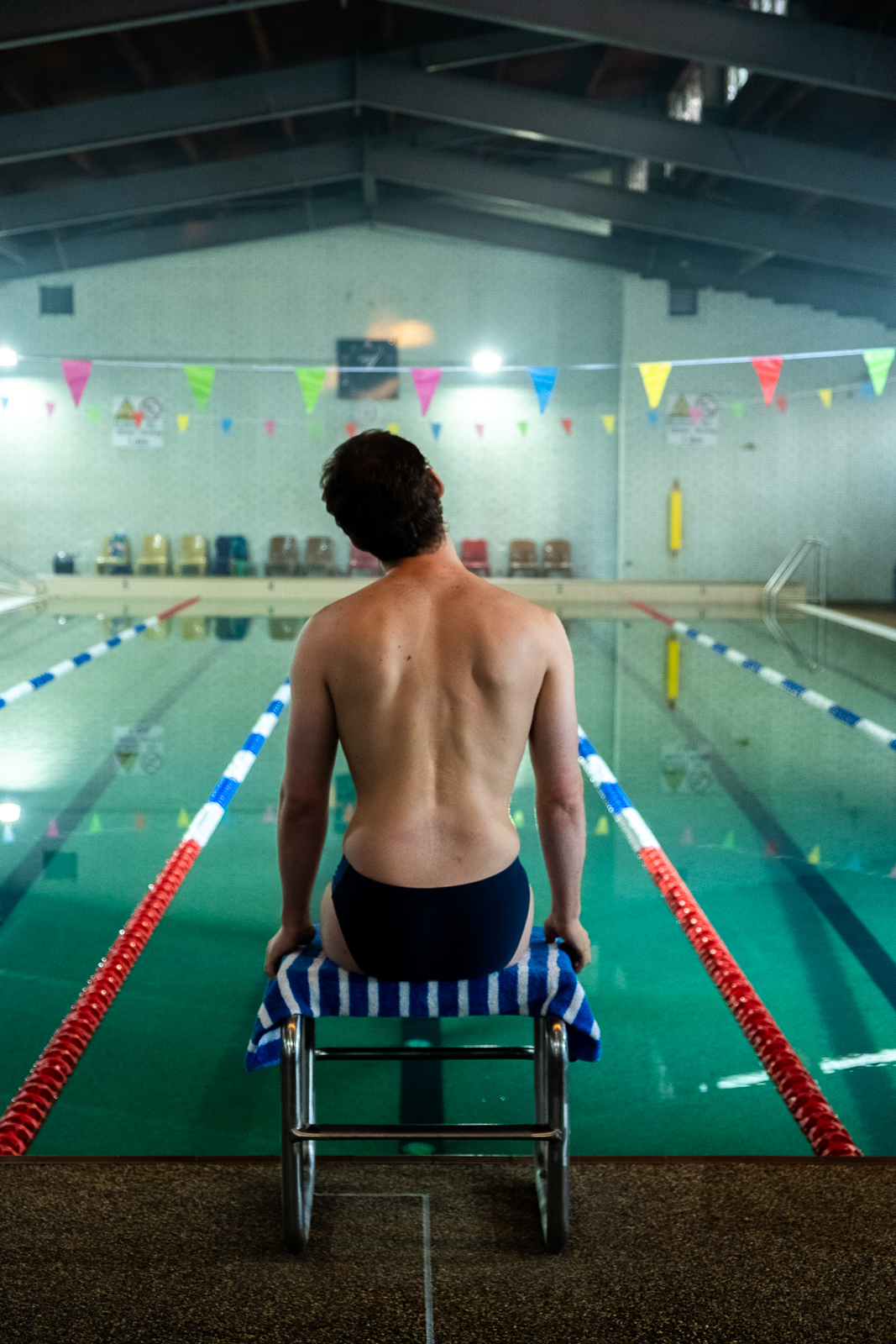By Emily Dings
In tough times like these, we can seek comfort in the words of our favorite cardigan-wearing children’s TV program host, Mr. Rogers. Specifically, we may remember the famous quote he shared from his mother about how to cope when things he saw on the news scared him: “Look for the helpers. You will always find people who are helping.”
Indeed, a look at the incredible work of some “helpers” in the amputee community affirms that there are many bright lights amid our current darkness.
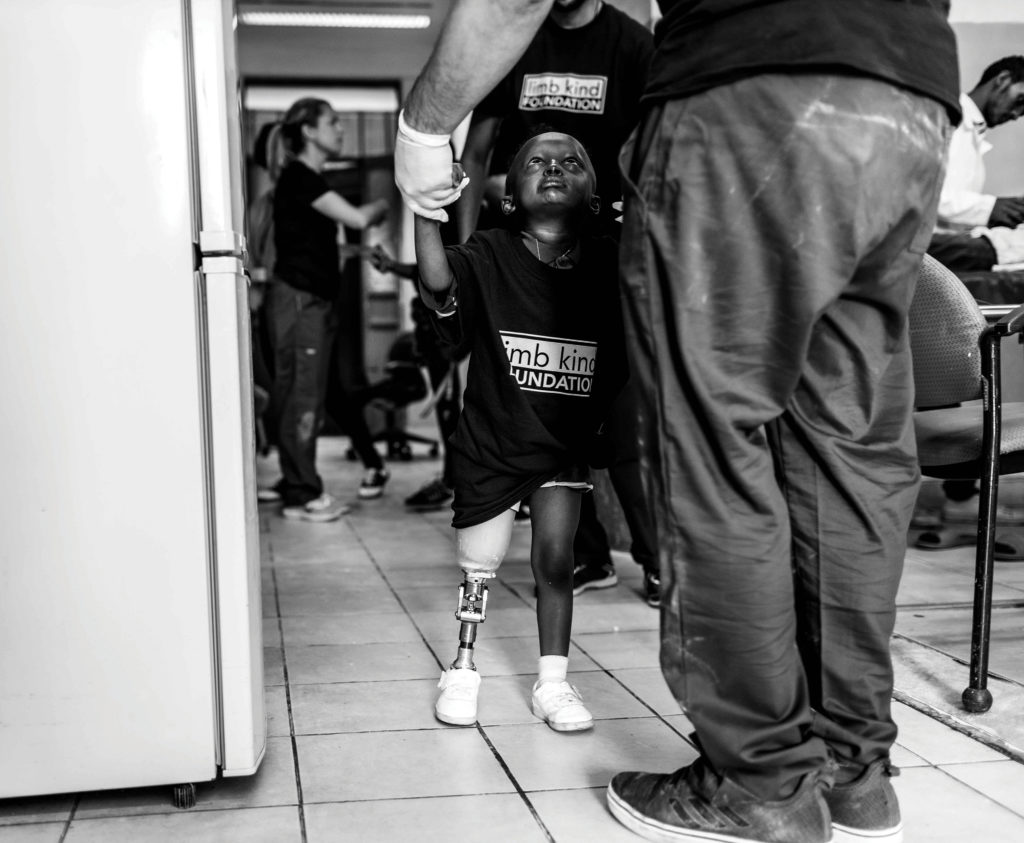
VISION TO REALITY
One such light is Robert Schulman. A prosthetist for over 25 years, Schulman’s life changed utterly when the Living Water Children’s Fund approached him to ask if he would consider traveling to Haiti to make prostheses following the devastating earthquake in 2010.
Schulman was deeply moved by the need for prosthetists in Haiti. He made seven prosthetic limbs for children during his trip and was overwhelmed by the gratitude of the recipients. He recognized that having a prosthetic limb meant these children would have a far better chance for success in life. Learning about other organizations that focused specifically on pediatric amputees—such as Camp No Limits—further fueled his interest in serving this population.
“I knew there was so much more I could do working as a team, if I had my own nonprofit,” he says.
Two years ago, that vision became a reality. Now known as the Limb Kind Foundation (www.limbkind.org), the organization is dedicated to providing prosthetic limbs to children from birth to 18 years of age worldwide.
Based in New York City, the foundation strips donated prostheses down to their components so it can rebuild them with new sockets on-site in international clinics. It started with a team traveling to Haiti in 2019, followed by trips to the Philippines and Ethiopia. Schulman hopes they will be able to add one country to their schedule per year. But their work doesn’t stop with supplying prostheses.
To fight the negative stigma that still accompanies limb difference in many countries, Schulman brings along amputee mentors—such as Paralympic athletes—as living proof that amputees can excel at anything they set their minds to. The team also includes physical therapists to ensure proper training for the recipients.
In addition to the foundation’s international work, it is planning to build a full-service pediatric prosthetic center in New York, with the goal that no family will have to pay any out-of-pocket expenses.
FILLING A NEED
Henry Iseman also found his calling in helping amputees across the world. While he was a student at Yale, Iseman and two friends embarked on a joint project to improve health outcomes in Vietnam. In their initial data gathering, they learned two key pieces of information: first, that there was a huge need for prosthetic limbs in Vietnam, and second, that there were thousands of usable prosthetic limbs gathering dust in clinics across the United States. Unfortunately, these used prostheses cannot be reused in the United States due to red tape and regulations.
Having worked with amputee veterans with the EOD Warrior Project in high school, Iseman had already discovered that helping amputees get the equipment they needed was a cause close to his heart.
“It was through working with them that I first learned about prosthetics, how they changed people’s lives,” he says.
Iseman and his classmates partnered with the largest orthopedic hospital in Vietnam to fit the limbs they were repurposing. Upon graduation, they expanded the organization, called Penta Medical Recycling (www.pentaprosthetics.org), to help amputees in need in seven countries. It is now headquartered in New York City.
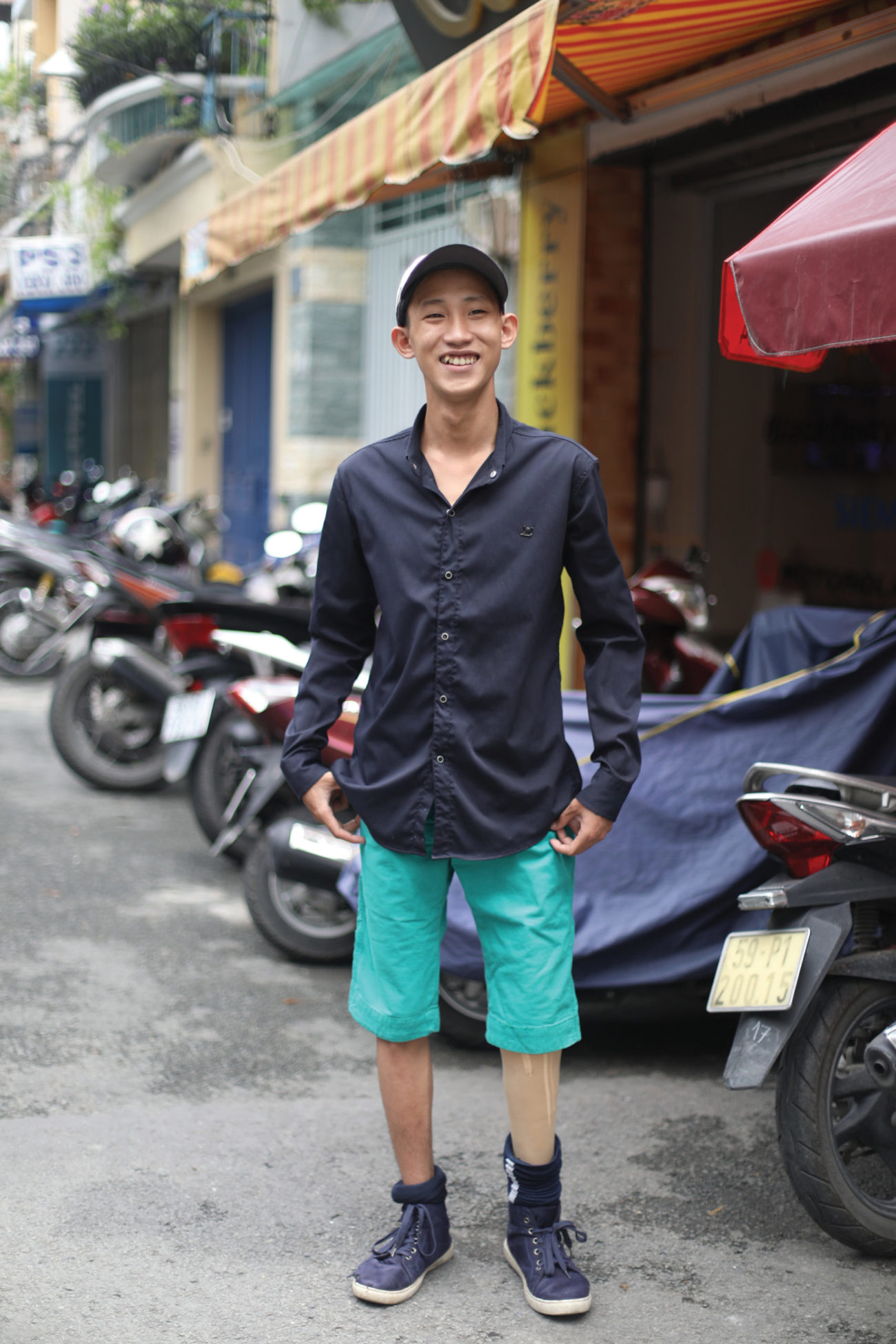
In the United States, Iseman explains, “amputees tend to get limb replacements every three to five years, but they are built to last eight.”
Also, he notes, many prosthetic limbs are returned to manufacturers. Before organizations such as Penta, there was only one option for these prosthetics: the industrial incinerator. Now they are donated and repurposed to help amputees all over the world.
In addition to its ongoing work in Vietnam, Penta has formed partnerships with organizations in Thailand, Sri Lanka, Ecuador, Guatemala, India, and Pakistan. By working with organizations on the ground in each of these countries, it is able to support the work of local medical teams and concentrate its efforts on gathering reusable prosthetic devices.
Iseman notes that it took a village to bring Penta’s vision to fruition. “We could not have made it this far without the individuals, organizations, and industry leaders that have connected with our vision and contributed to our effort to give mobility to those in need,” he says.
A DUTY TO GIVE BACK
Like Iseman, Noelle Lambert began giving back while she was still a college student. Her motivation was incredibly personal: She lost her left leg above the knee in a moped accident her freshman year. A Division I lacrosse player, athletics had always been a big part of her life.
She learned that a specialized prosthetic leg—one that would let her continue to play lacrosse—would cost between $10,000 and $50,000. She didn’t think she’d be able to raise the money and worried that her life in sports was over.
Instead, she returned to lacrosse her junior year, thanks to a running blade she received from the Challenged Athletes Foundation. She was also given a waterproof leg by the Heather Abbott Foundation. Her gratitude was so overwhelming that she decided to dedicate herself to helping other young amputees.
“[The gifts] were the reason I could live the life I wanted,” she says. “Getting so much support, I thought it was my duty to give back.”
Thus, The Born to Run Foundation (www.theborntorunfoundation.org) was born. Initially, it was challenging to raise funds, jump through all the legal hoops, and find the young athletes who could benefit. But gradually, she laid the groundwork for an organization that would allow her to donate life-changing prostheses to young athletes. She donated her first prosthesis a year later, a running blade for a 4-year-old boy.
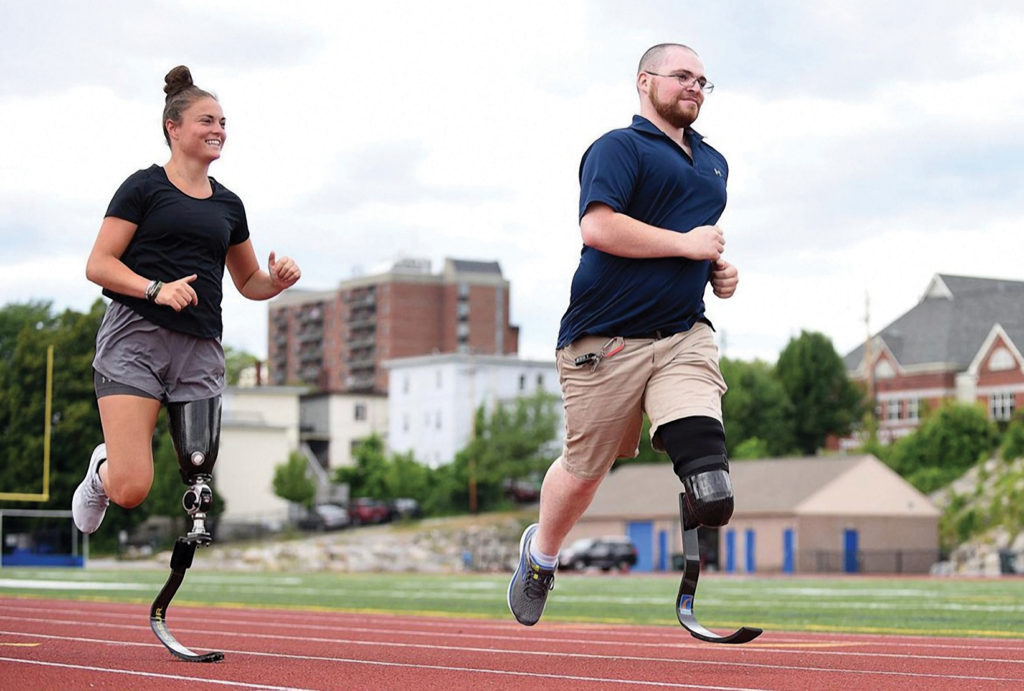
Since then, Born to Run has donated eight prosthetic devices. Based in Medfield, Massachusetts, Lambert makes it a point to deliver each prosthetic limb in person. Aside from wanting to meet the recipients herself, she wants them to see what she’s accomplished since her accident.
“It’s great for other people to see that I wasn’t stopped by my amputation—I just kind of picked it up and ran with it,” she says. And run with it she did—right into a phenomenal track and field career.
In February, Lambert placed fourth in the 100-meter race at the World Para Athletics Championships, breaking a US record. Now she is training for the 2021 Paralympic Games in Tokyo.
Although her latest trip to present a prosthesis was thwarted by COVID-19, Lambert shipped the device and connected with the recipient over video.
“It’s important for me to be there for every one,” she says.
A HABIT OF HELPING
Being there for amputees is also a calling for Joe Johnson, CEO of Quorum Prosthetics (https://opquorum.com). Like Lambert, he is an amputee and a world-class athlete: He competed as a skier in the 1994 Winter Paralympic Games. He understands firsthand how important getting the right device, the right fit, and the right physical therapy can be. A prosthetist for over 20 years, Johnson has fitted and donated at least one prosthetic limb each quarter.
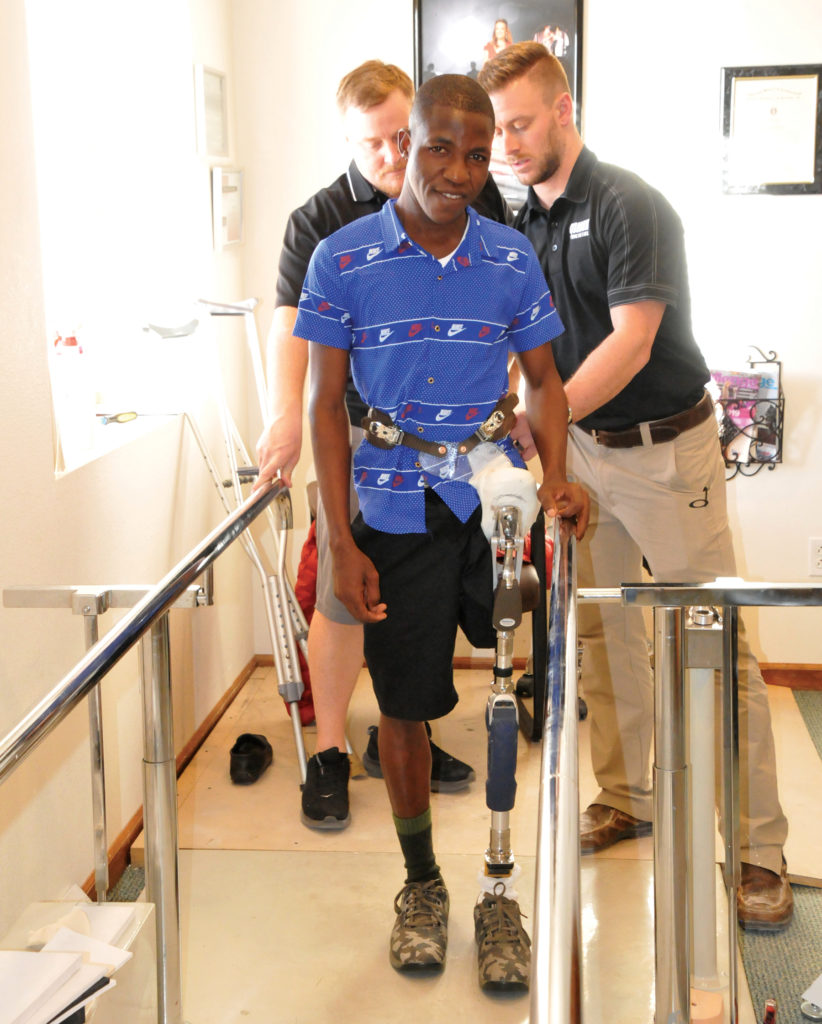
This habit of helping began in 2007 when a friend with the organization Climbing for Christ asked if Johnson would consider donating a prosthetic leg to a 13-year-old Haitian boy named Gilbert Lindor whose leg had to be amputated following an accident. Johnson readily agreed to work with Lindor, and Climbing for Christ flew the child to Quorum Prosthetics in Windsor, Colorado.
When Lindor arrived, Johnson learned that the amputation was a hemipelvectomy, a much higher-level surgery than he’d realized. He had to explain that sophisticated prosthetic limbs were not prefabricated, but instead required at least a month to design and fit.
But this wasn’t the end of Lindor and Johnson’s story. Last fall, Climbing for Christ contacted Johnson to ask if he might consider providing Lindor with an updated prosthetic leg. Now 23, Lindor was in medical school in the Dominican Republic and needed a leg that would allow him to stand through long hours of training. Lindor returned to the clinic for the fitting earlier this year.
Of his own drive to help others, Johnson says, “I’ve always been a giving person. I don’t expect anything in return—I just know that…you get what you give. God’s always blessed me, and that’s how I live my life.”
“We don’t want anyone to go without,” Johnson notes, a statement that could easily have come from Schulman, Iseman, or Lambert. It’s clear that in the amputee community, you don’t have to look very far to find the helpers.
TOP IMAGE: Image by Matilde Simas.


